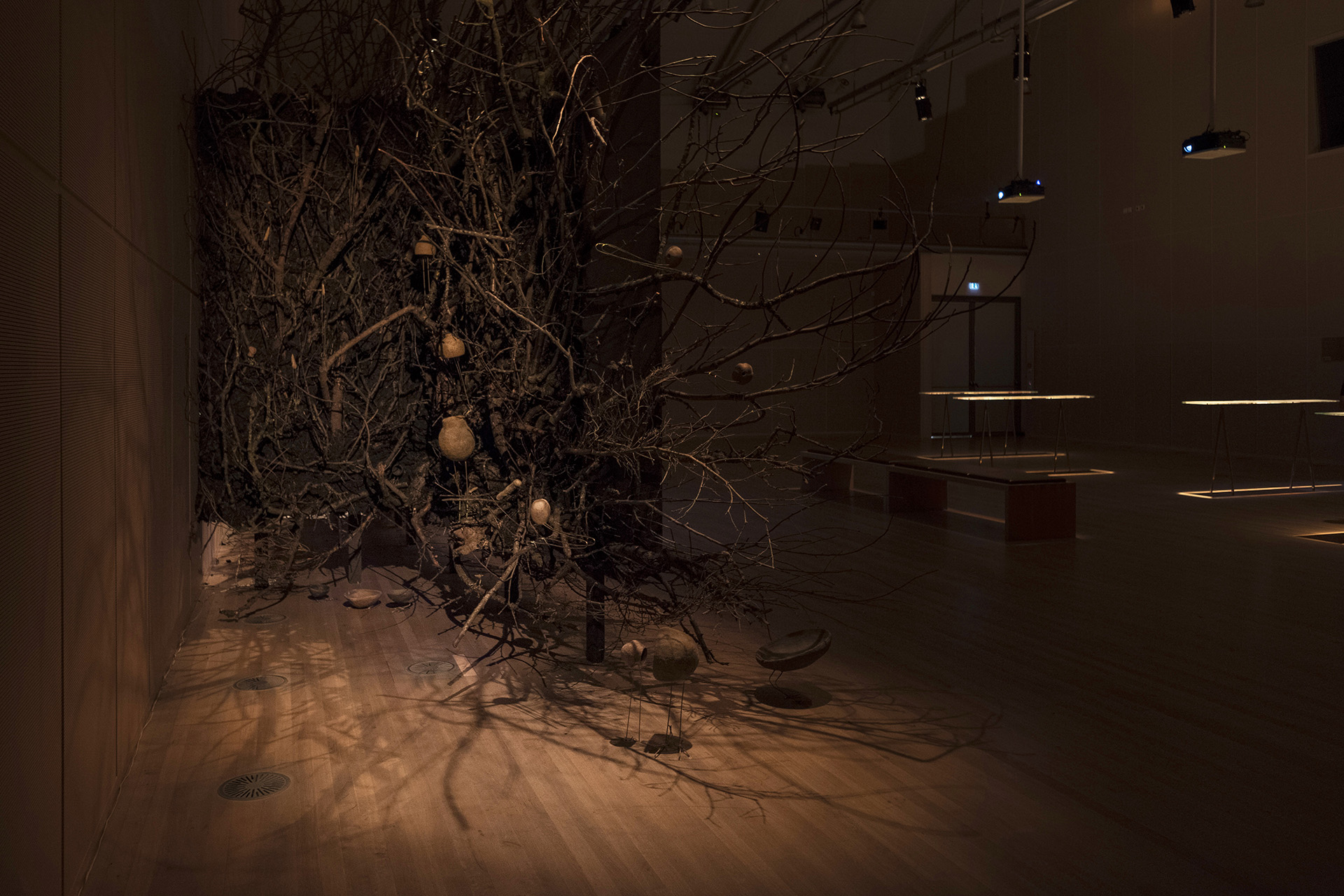curated by Leonardo Bigazzi
Fondazione Merz, 29 October 2018 – 3 February 2019
Fondazione Merz presents Shkrepëtima, the new personal exhibition of Petrit Halilaj (Kostërrc, Skenderaj-Kosovo 1986), the winner of the art section of the second edition of the Mario Merz Prize, the biennial international award for art and music promoted by the Fondazione Merz.
The exhibition constitutes the culminating and final point of a more complex exhibition project, curated by Leonardo Bigazzi, taking the form of three different stages in three locations significant for the life and career of the artist.
The first stage corresponds to the realisation of a performance that took place on 7 July 2018 at the ruins of the Cultural Centre of Runik (Kosovo), the city where the artist grew up and where he came in touch with the entire local community. Subsequently, from 20 July to 19 August 2018, an exhibition was presented at the Zentrum Paul Klee in Berne (Switzerland), underlining the profound shared aims between Switzerland and Italy as regards the mission of the Mario Merz Prize. Finally, the project arrives in Turin in the form of an important and unprecedented final exhibition the heart of which will be a site-specific intervention.
The work of Petrit Halilaj questions how the collective memory of a community is formed and aims to act as a spark. In the Albanian language the term Shkrepëtima means “flash” and, by extension, indicates a sudden and intense thought that works as an activator of consciences, but also recalls the historical legacy of the homonymous multiethnic cultural magazine published in Runik between the 1970s and ’80s.
Shkrepëtima continues the investigation into the historical roots of the town of Runik, intervening on the ground in order to change the processes of constitution of collective history and bring the community closer to its origins.
The starting point of this process in the traces of lost history is Runik, the town in which the artist grew up and where, between 1968 and 1983, an important Neolithic settlement was brought to light and, in particular, an ocarina: one of the oldest musical instruments ever found in the Balkans. Today, this important relic of the historical and cultural heritage of the area together with the complex of material sources found, is not accessible to the inhabitants as it is conserved in Belgrade.
The performance, produced by Hajde! Foundation and Fondazione Merz, which involves thirty performers, musicians and all the inhabitants of the village, will, through their common action reactivate the link between the population and its culture in the face of what remains of a symbolic place for the town’s memory. Until the outbreak of the terrible clash that led Kosovo to independence, the Cultural Centre included a large bookstore, a theatre and a cooperative and this aggregative function will find echo in the action orchestrated by Petrit Halilaj with his fellow citizens, even though the fate of the centre is extremely uncertain today.
The two exhibitions at the Zentrum Paul Klee and at the Fondazione Merz will present 40 new drawings executed by the artist after examining the documentary remains found at the Cultural Centre in Runik. The series will function as a conceptual storyboard for the performance and at the same time as a visual plot of the village’s cultural history.
The exhibition at the Zentrum Paul Klee is rounded off by the two-channel video installation The city roofs were so near that even a sleepwalking cat could pass over Runik without ever touching the ground (already presented as part of RU at the New Musuem in 2017), which records the anecdotal voices of a population whose history exists only in stories handed down orally.
The exhibition at the Fondazione Merz represents the real completion of the entire Shkrepëtima project: the final and total restitution of this descent down the roots of identity of a culture.
Through a new site-specific intervention that will include videos, sounds, sculptures, drawings and installations made during the performance in Runik, it will allow the public to penetrate the intricate dialogic system woven by the artist, in an attempt to reconstruct a link between the territory and its inhabitants.
The exhibition is accompanied by the publication of a catalogue published by hopefulmonster containing the documentation of the entire project.






































































